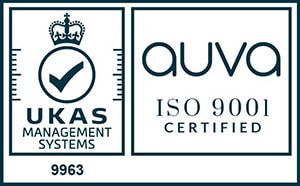Energy efficiency goes through the roof in New Lanark
Terri Taylor, Marketing Communications Manager, Intergas Boilers, recounts the six-year journey of an intrepid homeowner and her investigative installer to bring energy-efficient gas heating to New Lanark.
We all know how difficult it is to get planning permission for even a minuscule change to a listed building, but when that building is also a UNESCO World Heritage Site, the difficulty level is off the scale. World Heritage Sites include exceptional cultural and natural phenomena, such as the Great Wall of China, the Taj Mahal, the Great Barrier Reef and, closer to home, New Lanark, a purpose-built 18th century mill village in the picture-postcard-perfect Lanarkshire countryside. It was developed in 1786 by David Dale, who built cotton mills and housing for the mill workers, and soon became a successful business and an important milestone in the historical development of urban planning. Once the mills ceased production, the buildings fell into disrepair until 1974 when the New Lanark Conservation Trust (NLCT) was founded, now known as the New Lanark Trust (NLT) to prevent demolition of the village. Gradually the buildings have been restored and, in 2001, the village became a UNESCO World Heritage Site.
As each property was upgraded, back boilers, storage heaters or coal fires were fitted, and when accountant Tamara Jones bought a four-storey house 14 years ago, one of 10 in a terrace, she inherited a back boiler in the basement that was 25 years old. Initially she put up with its inefficiency, almost getting used to the hour-long wait before the water was hot enough to take a shower or bath, but when the boiler started breaking down on a regular basis, installing an efficient boiler began to dominate her life. Her problems could easily have been solved if she’d opted for an all-electric system, but Tamara wasn’t a fan and had her heart set on a gas combi and all the benefits that come with it. Installing a gas boiler would mean flueing the boiler through an exterior wall or through the roof, and that would affect the exterior of her home, which Tamara didn’t want to do, and the NLT wouldn’t allow. And so began a six-year campaign to find a method of flueing a gas boiler that would please all parties, and heating engineer, Steve Collins, Managing Director of Valleytech Heating, played a major role in Tamara’s eventual success.
Steve maintains the heating systems in many of the properties in New Lanark and was also Tamara’s heating engineer who’d repair her failing back boiler each year. He had had to go electric in the past when residents wanted to upgrade, as it was a very straightforward installation and planning permission wasn’t required.
‘Repairing the back boiler at Tamara’s house was becoming more and more expensive, as the parts were getting increasingly difficult to find. But as there was no way to flue the boiler through the existing brick chimney, it meant no one in New Lanark had an energy-efficient gas heating and hot water system. I started to investigate new methods of flueing the gas boiler but every system I developed was turned down by the NLT,’ said Steve. ‘Then, at a chance meeting with Alex MacAllister, the Intergas National Accounts Manager, at my local merchants, I learned that a solution existed all along. It’s called Flexi Flue.’
The Intergas Flexi Flue has a 10-metre flue system that can line a Class 1 chimney all the way to the top of the chimney pot, leaving the exterior fabric of the building untouched. Now this was something that met with NLT approval, but Steve still had to work out which chimney belonged to Tamara’s property. When the houses were originally built, they were for multiple occupancy, with fires on all floors, which meant all the terraced properties had shared chimneys in the party wall. In Tamara’s case, there were six chimneys running through her property. A smoke bomb helped locate the chimney pot and, from there, it was down to Steve to ascertain, using vibrations and precise measurements, where in the wall he’d locate the correct chimney to install Flexi Flue. Once this was done, installation started. It was highly complex and, for three days during December 2019, Steve and his team of two heating engineers and one apprentice, fitted the very first energy-efficient gas combi – an Intergas HRE 36/40 – in New Lanark. The boiler was sited in the attic, so there was as little disturbance to the interior of the building as possible, and the pressure gauge and filling loop was kept in a cupboard on the next floor down, so Tamara could check the pressure and top up if necessary, without going into the attic.
Why Intergas? Steve has been installing the brand for years, not just because of the bithermic heat exchanger, which he thinks is phenomenal, or its track record of reliability: ‘These boilers are amazing. Take the 36/40, you can run two baths at the same time*, because it has the power to do that, and you don’t need to lose cupboard space to a cylinder; you’re only heating the water you need, which is highly energy efficient and just what Tamara wanted.’
And did the new system deliver? 100%, says Tamara: ‘It may have taken six years to achieve what I wanted, but I wouldn’t settle. I didn’t want to go electric, it’s too expensive and I definitely wanted a combi so I could have instant hot water. With a double height living room, cost-effective heating is vital. I wanted affordable comfort and now I’ve got it.’ As these plans have been passed by the NLT, any New Lanark resident who wants to upgrade their heating system to gas will find the approval process is more likely to take weeks not years. The installation time won’t be any shorter though, because locating the correct chimney will still require an accurate measuring tape and the patience of Job.
* subject to various installation factors which must be checked by the installer beforehand.






